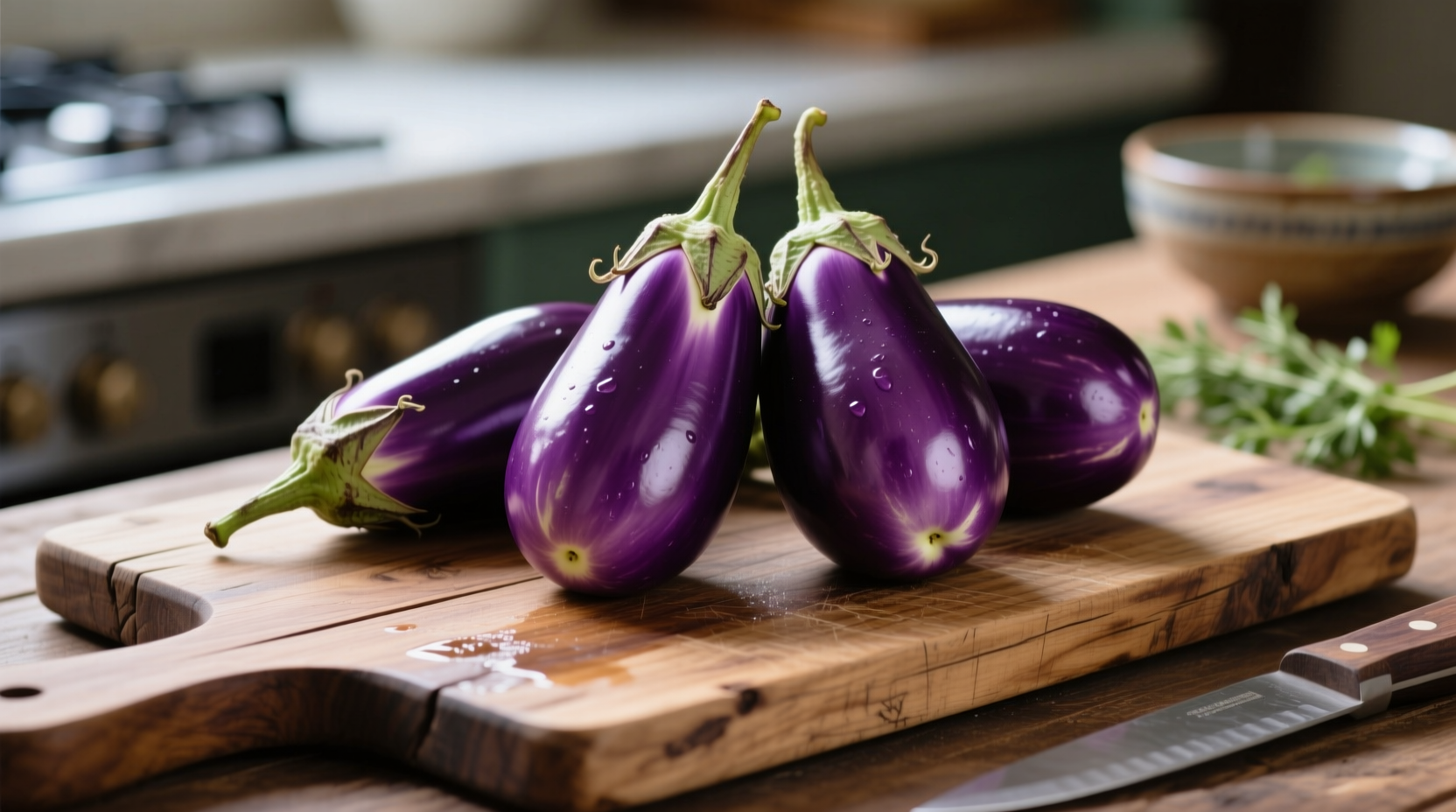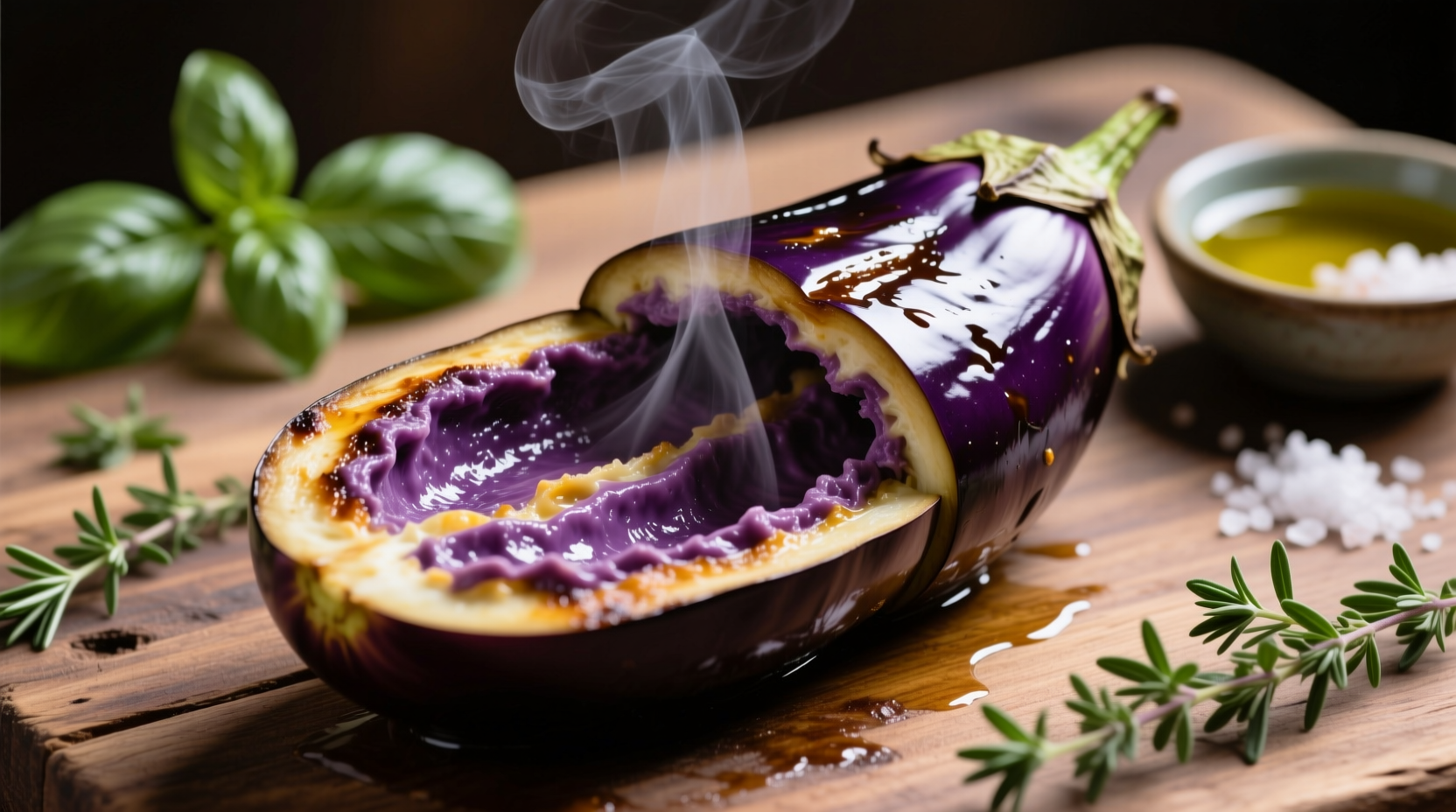Understanding Eggplant's Flavor Profile
If you've ever wondered what do eggplants taste like, you're not alone. This versatile vegetable (technically a fruit!) has a unique flavor profile that changes dramatically based on how it's prepared. Raw eggplant has a slightly bitter, earthy taste with a spongy, somewhat dry texture. But when cooked properly, it transforms into something entirely different—a creamy, rich component that absorbs surrounding flavors while maintaining its own distinctive character.

How Cooking Transforms Eggplant Flavor
One of the most fascinating aspects of eggplant taste characteristics is how dramatically cooking affects its flavor. The bitterness present in raw eggplant comes from compounds called phenolics, which break down with heat. Different cooking methods yield distinctly different results:
- Grilling: Creates a smoky, caramelized exterior with a tender interior
- Baking: Produces a creamy, almost buttery texture throughout
- Frying: Results in a rich, indulgent mouthfeel (especially when salted first to draw out moisture)
- Steaming: Preserves more of the vegetable's natural flavor with minimal bitterness
- Roasting: Concentrates flavors and creates complex sweet notes
Eggplant Varieties and Their Distinct Flavors
Not all eggplants taste the same! Different varieties offer unique eggplant flavor differences that can significantly impact your dish. Understanding these variations helps you select the right type for your culinary needs.
| Variety | Flavor Profile | Best Cooking Methods | Bitterness Level |
|---|---|---|---|
| Globe (American) | Mild earthiness, slightly sweet when cooked | Roasting, grilling, baking | Moderate |
| Japanese/Chinese | Sweeter, more delicate flavor | Stir-frying, steaming | Low |
| Italian (Rosa Bianca) | Nutty, complex flavor with floral notes | Sautéing, grilling | Low-Moderate |
| Indian (Baby) | Intensely earthy with pronounced bitterness | Curries, deep-frying | High |
Why Proper Preparation Matters for Eggplant Taste
Many people form negative opinions about eggplant based on poorly prepared experiences. The key to enjoying what cooked eggplant tastes like lies in proper preparation. Salting eggplant before cooking (a process called "degorging") draws out excess moisture and some bitter compounds, resulting in better texture and flavor.
According to agricultural research from the University of California Cooperative Extension, eggplant's bitterness varies based on growing conditions and freshness. Fresher eggplants typically have lower bitterness levels, which explains why locally grown eggplants often taste milder than supermarket varieties shipped long distances.
Eggplant Flavor Pairings That Work Wonders
Understanding eggplant taste combinations can transform your cooking. Eggplant's mild flavor makes it incredibly versatile, but certain pairings create exceptional results:
- Mediterranean style: Garlic, tomatoes, olive oil, and herbs like oregano
- Asian approach: Soy sauce, ginger, sesame oil, and chili
- Middle Eastern favorites: Tahini, lemon, cumin, and smoked paprika
- Italian classics: Basil, mozzarella, and balsamic reduction
Eggplant's ability to absorb surrounding flavors means it serves as a perfect canvas for these complementary ingredients. The James Beard Foundation notes that properly prepared eggplant can mimic meaty textures, making it ideal for vegetarian dishes that satisfy even meat lovers.
Common Misconceptions About Eggplant Taste
Several myths persist about eggplant flavor misconceptions that prevent people from enjoying this nutritious vegetable:
- Myth: All eggplant is extremely bitter
- Reality: Modern varieties are much milder, and proper preparation minimizes bitterness
- Myth: Eggplant tastes like other nightshades (tomatoes, peppers)
- Reality: While related, eggplant has a distinctly different flavor profile
- Myth: Eggplant has no nutritional value
- Reality: Eggplant contains fiber, potassium, and nasunin—an antioxidant in the skin
When Eggplant Works Best (and When It Doesn't)
Understanding the context boundaries for eggplant flavor helps you use it effectively. Eggplant shines in these situations:
- As a main component in dishes like baba ghanoush, ratatouille, or eggplant parmesan
- When paired with strong flavors that it can absorb
- In slow-cooked dishes where its texture transforms completely
- As a meat substitute in vegetarian and vegan recipes
Eggplant may not work as well when:
- Used raw in large quantities (better for cooked applications)
- Paired with very delicate flavors it might overwhelm
- Not properly prepared, leading to unpleasant texture
- Overcooked to the point of becoming mushy
Practical Tips for Perfect Eggplant Every Time
Follow these evidence-based techniques to maximize eggplant flavor enhancement:
- Choose wisely: Look for firm, shiny skin with no bruises. Heavier eggplants typically have more moisture and better texture
- Test for bitterness: Rub a small piece of raw eggplant on your wrist—if it turns yellow, it's likely more bitter
- Proper salting: Slice, salt generously, wait 30 minutes, then press out liquid and rinse
- Oil wisely: Eggplant absorbs oil like a sponge—brush oil on rather than pouring into pan
- Cook thoroughly: Undercooked eggplant remains spongy; proper cooking yields creamy texture
Food science research published in the Journal of Food Science shows that cooking eggplant with acidic ingredients like tomatoes or lemon juice helps maintain its structure while enhancing flavor development through the Maillard reaction.
Historical Context of Eggplant Flavor Preferences
Eggplant's journey from being considered inedible to culinary star reveals interesting patterns in how eggplant taste perception evolved. Originally cultivated in India around 300 BCE, eggplant spread slowly due to early perceptions of bitterness:
- 500 BCE: First cultivated in India, initially used medicinally
- 7th century CE: Introduced to China, where selective breeding reduced bitterness
- 8th century CE: Brought to the Middle East, incorporated into early versions of baba ghanoush
- 15th century CE: Introduced to Europe, initially feared as potentially poisonous
- 20th century: Modern varieties developed with significantly reduced bitterness
This historical evolution explains why certain regions have more developed eggplant cuisines—their culinary traditions developed specific preparation methods to optimize eggplant taste experience over centuries.
Putting It All Together: Creating Delicious Eggplant Dishes
Now that you understand what eggplants taste like and how to work with them, you can create dishes that showcase their best qualities. Start with a simple preparation like roasted eggplant with garlic and olive oil to appreciate its natural flavor, then experiment with more complex recipes as you become familiar with how it behaves in different cooking scenarios.
Remember that eggplant's magic lies in its ability to transform—both physically and flavor-wise—through proper cooking. With the right techniques, you'll discover why this versatile vegetable has become a staple in cuisines worldwide.











 浙公网安备
33010002000092号
浙公网安备
33010002000092号 浙B2-20120091-4
浙B2-20120091-4